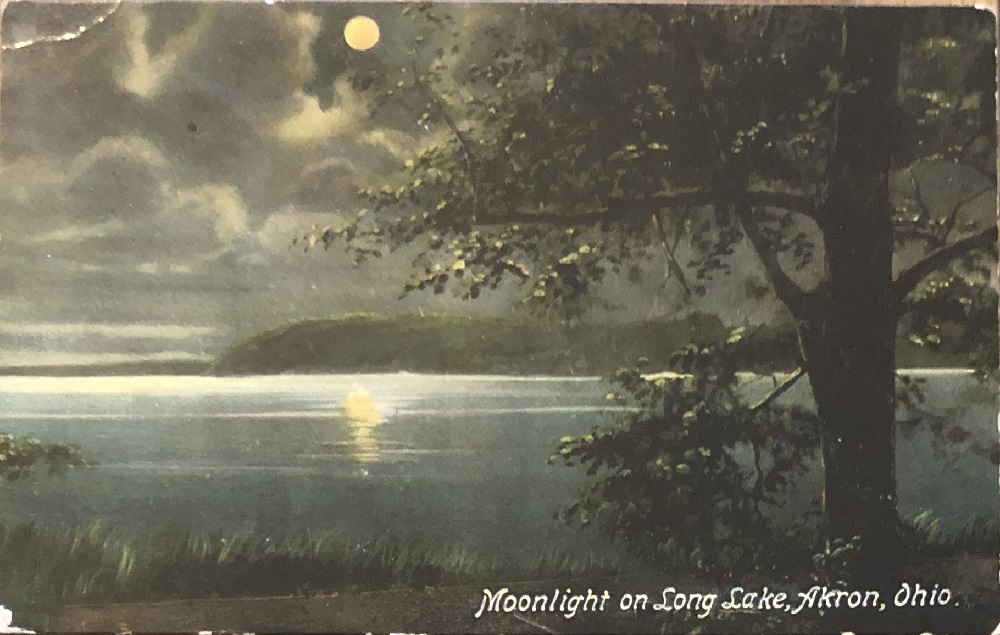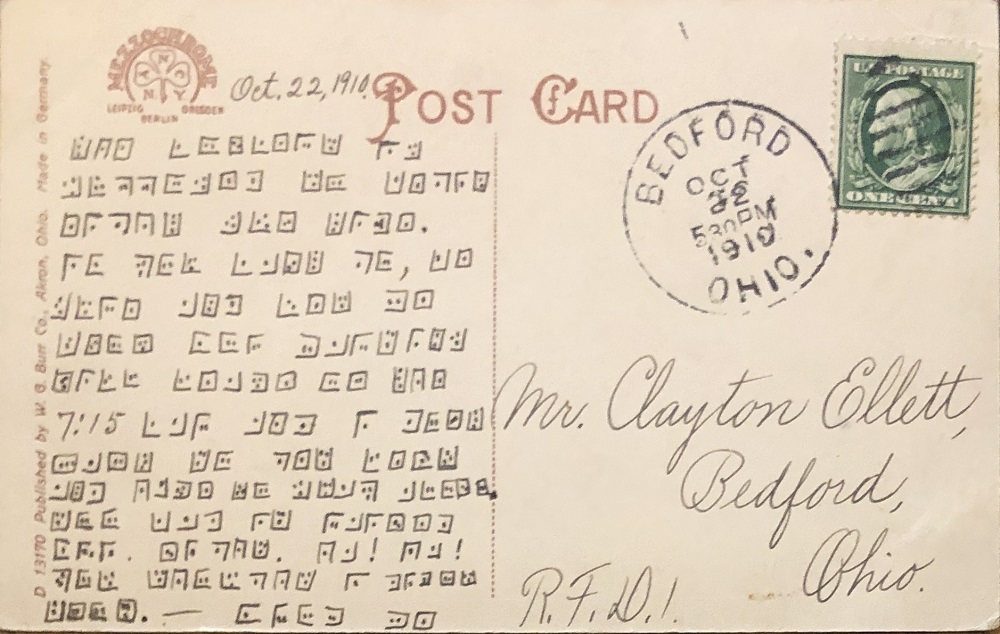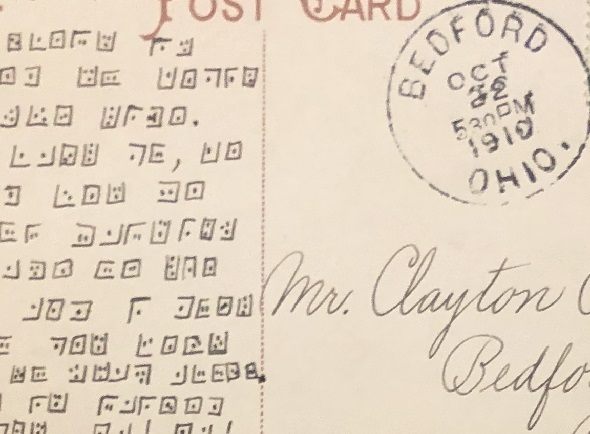In 1910, a man living in Bedford, Ohio, received an encrypted postcard. Can a reader decipher it?
As already stated in my last post, the US state of Ohio seems to be a good source for interesting cryptograms. In addition to the train station robbery cryptogram, several other encrypted messages from Ohio have been covered on this blog. My friend Tobias Schrödel …

Source: Schrödel
…, who is known as a comedy hacker, encrypted postcard collector, and crypto book expert, has now provided me two more encrypted postcards from Ohio. This post is about the second one (the first one was covered last Monday).
A postcard sent to Bedford
The second postcard Tobias provided me was sent to Bedford, a town in the northeast of Ohio. Bedford (a suburb of Cleveland) is located about 200 kilometers away from Toledo, the place were the recipient of the other Ohio postcard lived.

Source: Schrödel
The picture on the postcard shows Long Lake, a lake located near Akron, another suburb of Cleveland. The message is dated October 22, 1910.

Source: Schrödel
Unlike most other encrypted postcards I am aware of, this one was sent to a man. The recipient was named Clayton Ellet. No street is mentioned (apparently, Bedford was that small that this was not necessary). Below the address, the letters R.F.D.I. are written – I don’t know what this abbreviation means.
The cryptogram
The cipher used is apparently a variant of the Pigpen cipher (similar, but not the same as the one I covered last Monday). As the ciphertext contains spaces, it should be possible to guess a few words. Tony Gaffney has solved many of the ciphers in his book The Agony Column Codes & Ciphers by guessing the word LETTER, which also worked for the other Ohio postcard Tobias provided me. However, today’s postcard doesn’t contain a word that fits with LETTER.
The ciphertext contains a one-letter (it appears twice). As there are only two one-letter words in the English language (A and I) this allows for a guess. As the pronoun I is more frequent on postcards than the indefinite article A, my guess is that the one-letter word in this text is I.
Is my assumption correct? Can a reader find out more? Can you decipher the postcard? If so, please leave a comment.
Follow @KlausSchmeh
Further reading: Unsolved: A strange encrypted postcard from Newton, Iowa
Linkedin: https://www.linkedin.com/groups/13501820
Facebook: https://www.facebook.com/groups/763282653806483/



Kommentare (13)